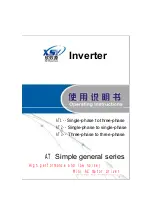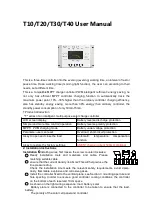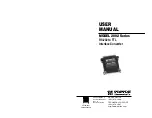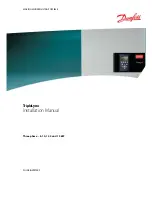
Page 3 of 6
Assembly instructions
Assemble the kit in the order of these instructions. All components are placed
on the top side of the PCB (marked “top”) as close to the PCB as possible
and soldered on the bottom side of the PCB (marked “Bottom”). Use a bend-
ing tool (e.g. Conrad 425869 – 62) for bending. Cut the leads of components
flush using a wire cutter after soldering.
Solder cleanly and precisely!
Component layout diagram on the PCB
Populated PCB
1. Resistors
Bend the resistor leads for 7.5 mm pitch before insertion. To facilitate placing
components on the PCB support the edges of the board with the help of two
books, for instance, to leave enough space for the leads under the board.
Insert the resistors on board aligning the coloured rings of all the resistors in
the same way to make it easier to verify the value of the resistors later. Place
a suitable plane piece of wood or similar on top of the resistors on board. Turn
the board together with the wood upside down. The underside of the board is
now conveniently accessible for soldering the components.
Solder one end of each resistor first and check that they are positioned prop-
erly before soldering the other end of each resistor.
R1 - R3:
100Ohm
(brown, black, black, black, brown)
R4 - R7:
4,7kOhm
(yellow, lilac, black, brown, brown)
R9 - R12:
22kOhm
(red, red, black, red, brown)
R13:
2,2kOhm
(red, red, black, brown, brown)
R14:
680Ohm
(blue, grey, black, black, brown)
R15 - R30: 1,8kOhm
(brown, grey, black, brown, brown)
(R31 - R46: 3,3kOhm
(orange, orange, black, brown, brown))
2. (Solder bridges)
If the Extension kit ESMot is not used, first
set all 16 solder bridges at their dedicated
places on top of the PCB.
Alternatively at
these placeholders for the diodes, the
required series resistors for LED signals
may be populated here.
3. (Diodes)
The diodes of the Extension kit ESMot are mounted
with the cathode (marked with a stripe) to the inner side
of the PCB.
D17 – D32:
1N4001
4. IC, Socket for PIC
Place and solder the PIC socket and ICs with the
notches according to the component layout diagram on
the PCB.
IC2:
LM393
Sockel:
Socket for PIC
5. Push button
Place on the reserved spot accordingly and solder.
6. LED
The cathode of the LED is to be placed to face the
corner of the PCB. The shorter lead of the LED is the
cathode and the collar is also flat on the cathode side.
7. Ceramic capacitors
C1, C2:
100nF
(104)
8. Voltage regulator, transistors
The transistor and the voltage regulator can be placed
simultaneously when proceeding similar to the resistors.
Do not confuse the transistors with the voltage regulator
78L05!
T1:
BC547
T2:
BC557
IC3
78L05Z
9. Terminals
Row up the terminals for X4 and X5 before sodering!
X3:
2-pinned terminal
X4 - X5:
3-pinned terminals
10. Transistors
Pay
attention
to
the
orientation:
Transistors T3 to T10 (and T19 to T26)
are installed with their metallic side
(metallic shiny or black without marking)
facing the label “WDMiba v5-2010”, T11
to T18 (and T27 to T34) in the opposite
direction.
11. Rectifier
The rectifier has to be placed in the same height as the
transistors. Watch out the polarity.
B1
B80C1500
12. Electrolytic capacitors – Watch polarity!
The shorter lead is the negative pole and must be
facing to the right.
C5, C6:
47µF
C4:
1000µF
13. SX-bus jacks
Solder the shielding (big pads) of the jacks generously.
14. Verification and mounting the PIC
After soldering all components on the PCB verify once
more that they are placed according component layout
diagram and that they are oriented properly. Check that
all solder points on the bottom side of the PCB look
correct. Note especially if there are any undesired
solder bridges between solder pads.
After the verification the PIC can be mounted:
IC1:
PIC ”WD3“
15. (Recovery diodes)
According to the drawing on the right,
the recovery diodes are soldered with
their cathodes (stripe) to the common
(b) pole.
























